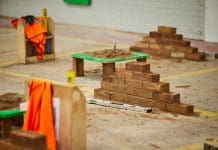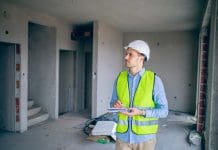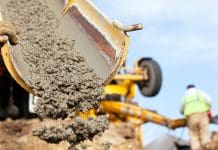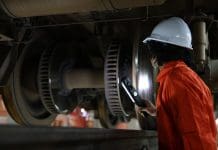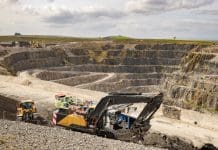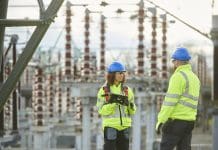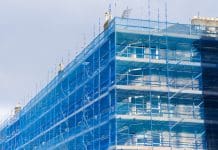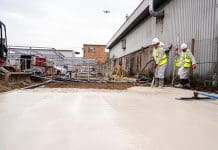Reinforced Autoclaved Aerated Concrete (RAAC) has hit the headlines after hundreds of schools, as well as hospitals, courts, theatres, and leisure centers, were forced to close partially or fully due to the presence of the material. Patrick Hayes, technical director of the Institution of Structural Engineers, looks at how RAAC came to be so widespread and how it can be managed
As schools returned from the summer holidays to start a new term, the DfE issued a press statement about its new directive, advising that any school space or area with confirmed reinforced autoclaved aerated concrete or RAAC should no longer be open without mitigation measures.
This surprise announcement instantly made the news headlines, with intense national and local media interest and concerns about RAAC.
IStructE immediately issued a statement with a FAQ to ensure audiences understood this material – what it is, how it was used, and how IStructE’s RAAC guidance helps to identify and manage this ubiquitous building material.
RAAC’s risks identified
RAAC was created in the 1930s in Sweden. It was used in buildings to form roof planks, wall panels, and sometimes floor planks between the mid-1950s and mid-1990s.
It has an open texture, and open-sided bubbles can often be seen. The surface is slightly crumbly when touched unless heavily painted or coated, and it’s easy to gouge with a screwdriver.
Importantly, if properly designed, manufactured, in good condition, and with good bearing, RAAC installations are considered safe.
However, these porous panels can creep and deflect over time, exacerbated by water penetration, particularly in thinner units.
The porous nature makes it even more susceptible to moisture. If the steel reinforcement or rebar is water-damaged, RAAC can become compromised, causing it to spill and break apart.
If insufficient bearing and their structural integrity is compromised, RAAC panels can collapse with little or no warning. When installed, the internal reinforcements sometimes ended short of the load-bearing point, creating an additional hazard.
So why was it specified?
When RAAC was originally created, specifiers understood its other benefits.
But its longevity was less well recognised, alongside the porous material’s susceptibility to the UK’s damper, wetter climate.
RAAC was seen as a lightweight, robust, and, crucially, cost-effective material. During tighter economic times, RAAC was particularly attractive for public sector buildings, which could be manufactured and installed quickly to build critical infrastructure, such as schools and hospitals.
RAAC also possessed strong thermal performance qualities, allowing further economies for the heating and ventilation of such buildings.
RAAC red flags
Numerous red flags have been raised about RAAC, including landmark alerts by the Standing Committee on Structural Safety (SCOSS), now known as CROSS.
In 1999, it issued a report with a section about RAAC safety, which advised that “owners of both school and non-school buildings that have pre-1980 RAAC plank roofs should arrange for these roofs to be inspected if this has not been done since 1994.” (Source: Structural Safety 1997–99: Review and recommendations, Twelfth Report of SCOSS, February 1999).
Then, in 2019, it published findings about a school building failure involving a flat roof constructed using RAAC. There was little warning of the collapse; thankfully, no one was hurt. (Source: SCOSS Alert May 2019: Failure of Reinforced Autoclaved Aerated Concrete planks).
Expert and trusted guidance is available from IStructE
As a result of this 2019 alert, IStructE established an RAAC expert study group to guide the engineering profession and broader industry. You don’t need to be a member of IStructE to join – it is open to all.
This group is responsible for two trusted and expert guides, published to improve awareness of RAAC among the wider structural engineering community and share findings to help those who are asked by clients to advise on the management and mitigation of RAAC panels.
The first guide was published in February 2022, followed a year later in April 2023, with further guidance about the risk factors associated with RAAC panel construction. This latter guide includes a proposed classification approach of risks and how these may impact the proposed remediation and management of RAAC.
These risks can be addressed and remediated by a Chartered or Incorporated Engineer.
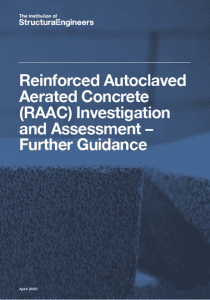
Looking forward
Policymakers in the UK have used these guides as a basis for their decisions about RAAC in schools and other public buildings.
More than ever, our members’ structural engineering know-how is invaluable to reassure, provide remedies, and ensure that lessons are learned from the past to benefit a safe, future-proofed, and sustainable built environment.

Patrick Hayes
Technical director
Institution of Structural Engineers
Tel: +44 (0)20 7235 4535
www.istructe.org



